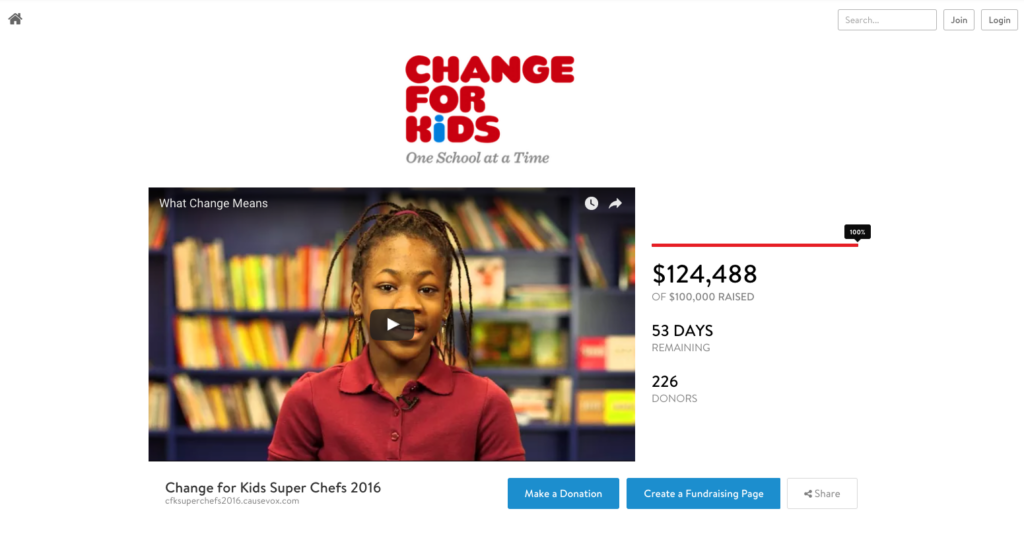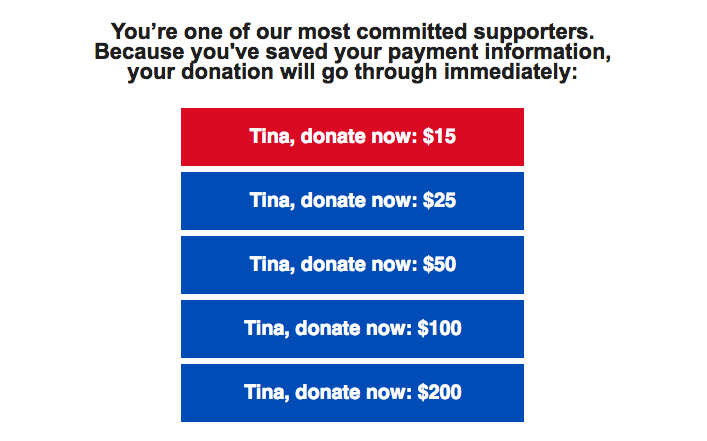Today is election day here in the US and we’ve all learned a lot about our two general election candidates and their primary opponents over the last year and a half.
But, aside from the political (and personal) campaigning, there are a number of takeaways that nonprofits and charities can learn from the general election campaign moving forward.
“There are a number of takeaways that nonprofits and charities can learn from the general election campaign…” tweet this
Here are 7 valuable fundraising and storytelling lessons from this year’s US presidential race.
1) Use Social Media To Share Your Story
Since they began campaigning last summer, every primary and general election presidential candidate has used social media to rally supporters. Just recently, both Hillary Clinton and Donald Trump ramped up their social media usage to share information on their proposed policies and plans for the future of America.
Check out these examples from our two major party candidates:
Today I introduced my Contract with the American Voter – our economy will be STRONG & our people will be SAFE. https://t.co/uezUaUp0cd pic.twitter.com/bS6iQTHJLF
— Donald J. Trump (@realDonaldTrump) October 22, 2016
While we already know that social media is the best way for you to connect with your supporters immediately and authentically, we’ve also seen the candidates effectively use social media to share their own story and vision.
CauseVox was built on the belief that sharing your story is the best way to create long-term relationships (online and offline) with your supporters. Our built-in social media tools on every fundraising page encourage others to share your organization’s story.

By using social media as a tool to tell your story, you’ll be inspiring people not just to give, but to advocate and participate in your cause long after the initial gift is made.
2) It’s Best To Be Bold
One of the biggest lessons we’ve learned this campaign cycle is that it’s perfectly acceptable to be bold. We’ve seen it continuously over the past year, as candidates made direct, strong statements making their case for why they should become President.
Clinton and Trump definitely aren’t afraid to make a statement if it’s something they believe in— and neither should you.
“Clinton and Trump definitely aren’t afraid to make a statement if it’s something they believe in— and neither should you…” tweet this
Private sector > Government
— Dr. Rand Paul (@RandPaul) October 29, 2015
Women in America want the whole damn dollar. And they’re right. Equal pay is an issue of basic equality not a radical idea.
— Bernie Sanders (@SenSanders) April 14, 2016
Here are some ways that you can be bold:
- Use facts to back up your nonprofit story.
- Inform your audience about the problem and let them know that your organization is part of the solution.
- Use “can do” language such “we will” or “you can”
- Speak directly to your audience from the heart, as World Help does in this Twitter post.
“No one should have to live under these conditions … especially children.” – @vernonbrewer. https://t.co/1coDcJCli2 pic.twitter.com/G9a8aQXJ4K
— World Help (@world_help) October 20, 2016
3) Don’t Underestimate Email Marketing
If you’ve subscribed to the email lists for either Clinton or Trump, you know that you’re likely to receive at least an email or two (or more) every day. And that’s because email marketing works!
A great technique that Clinton’s campaign uses to secure donations is to save your donor information. Then, over the course of the campaign, you’re sent regular emails asking for a donation and all the donor has to do is push a button (since the information is already saved). It’s remarkably easy for the donor to give this way.

You can (and should) use emails to raise awareness AND money for your cause. In fact, for every $1 spent on email marketing, you can expect an average return on investment of $38.
Better yet, make it easy for your donor to give by pre-populating some of their contact information or including donation buttons for a specific amount.
4) Subject Lines Encourage Opens
Wow! This year’s US presidential race has been full of amazing subject lines. One of the most recent ones from Hillary Clinton’s campaign was as follows:

And here’s one of the latest from Donald Trump:

Both of these subject lines include many best practices. They are short, direct, ask a question, and for the case of Clinton’s email, were timely since early voting began in my home state on this day.
Remember that your email recipients are much more likely to open your email if the subject line appeals to them (33% of people open an email based on the subject line alone!).
For additional best practices and inspiration, review our post 11 Fundraising Email Subject Lines To Improve Your Nonprofit’s Open Rates.
5) Consider Your Audience
We discussed “power words” in our last Donald Trump post, but it’s an important point to follow up on since he’s ramped up his power-driven, business-like approach in recent months Qualities, one could point out, that he’s running on as a candidate and qualities that are likely to appeal to his audience.
The post below is just one of dozens of examples from Trump’s Twitter handle. He makes powerful statements like “We will…” and uses words and phrases that will inspire and mobilize his voters.
Crooked Hillary has never created a job in her life. We will create 25 million jobs. Think she can do that? Not a chance. #BigLeagueTruth pic.twitter.com/V8WGjAIyKV
— Donald J. Trump (@realDonaldTrump) October 20, 2016
At the same time, Hillary Clinton is reaching out to voters that may currently or have, in the past, felt and/or been marginalized. Thus, her language and approach is vastly different from that of her opponent.
“Whether you agree or disagree with me, whether you vote for me or not, I believe we can disagree without being disagreeable.” —Hillary
— Hillary Clinton (@HillaryClinton) October 22, 2016
We don’t believe that one “language technique” is better or worse than the other, but we do know it’s important to use the right language when telling your story. The words and approach you choose to use will depend on:
- Who your audience is
- What will inspire and mobilize them to get involved
Just as Bernie Sanders understood his voter base (millennials), it’s important for you to know who you’re talking to and what appeals to them when crafting your story and fundraising appeals.
6. Every Donation Counts
During the primary, Bernie Sander’s average donor gift was smaller compared to Clinton’s, yet he consistently had more donors (and oftentimes more monthly revenue). In short, lots of small donations had just as much impact as fewer major ones.
Yes, donations of every size do matter. Yet we tend to pay much more attention to our major donors. This election helped bring attention to the fact that all gifts, no matter their size, contribute to impact.
“This election helped bring attention to the fact that all gifts, no matter their size, contribute to impact…” tweet this
We’ve noticed the same trends at CauseVox. While the average donation made through our platform is $78, dozens and hundreds of gifts of this size add up to significant totals!
Plus, you can develop a relationship with your smaller donors over time and hopefully convert them into major or recurring donors in the future with concerted retention and engagement efforts.
7. There’s Power In Recommendations
Over the past year, we’ve been rightfully obsessed with news on political endorsements. Learning who’s supporting who has helped shaped our opinions of the candidates.
Keep this in mind as you move forward with your own fundraising efforts. If possible, use your current supporters to influence others to join your cause, such as by sharing your campaign with friends and family on social media and through email, using donor testimonies, or with a peer-to-peer fundraising campaign.
There is extreme power in recommendations, so use them to help spread your fundraising campaign and expand your donor base.
When we wake up tomorrow, we’ll be waking to a new future. The political ads will stop. The yard campaign signs will be put in the trash. We’ll be on the brink of a new era.
And while the outcome will leave some people will be happy and others sad, at least we can learn and grow as a result of this sometimes tumultuous campaign cycle.
If anything, the 2016 presidential campaign taught us that power comes from both language and people. And now is the time to use that power to bring about change to those your nonprofit serves.
Happy Election Day!




